Old-World Camelids
A Camel’s Overview
Old-World Camelids or Camels are even-toed ungulates with long legs, big-lipped snouts and distinctive fatty deposits known as “humps” on their backs. The three surviving species of camels are the Dromedary/Arabian Camel, the Bactrian Camel and the Wild Bactrian Camel. Asian camels (the Bactrian Camel and the Wild Bactrian Camel) have two humps whereas Arabian Camels only have one. The South-American Camelids/New-World Camelids species (the Llama, the Alpaca, the Vicuña, and the Guanaco) are strongly related to camels, and both families are believed to have emerged from the same ancestor in the past.
In general, camels are social animals which roam the deserts in herds led by a dominant male in search of food and water. They are adapted well to their original harsh environment through many effective ways. The humps are actually reservoirs for fatty tissue and concentrating fat in their humps minimizes insulation throughout the rest of the body. Thus allowing camels to survive in such extreme hot regions. Camels are also able to shut their nostrils and lips during sand storms, in addition to having two rows of thick eyelashes to protect their eyes from the desert dust.
Camel’s Characteristics
The camel can go for a week or more without water, and it can last for several months without food. It can survive a 40% weight loss and then it drinks up to 135 liters or more of water in one drinking session. Camels aren’t picky about what they eat and their thick lips allow them to eat things that most other animals couldn’t. These tough but flexible lips can break off and eat vegetation that other animals can’t such as; thorns or salty plants. Camels are also ruminants, like Cattle, and they regurgitate the food back up from their stomach to chew it again.
Camels are large animals with average life expectancy of 40 to 50 years. A full-grown camel stands at least 1.85 m at the shoulder and 2.15 m at the hump and weighs at least 300 kg. A camel can also run at up to 65 km/h in short bursts and sustain speeds of up to 40 km/h.
After a gestation period of 13 to 15 months, a mother Camel finds a private spot to have her young. The calf has no humps but small peaks of hide, each topped with a tassel of curly hair to indicate where the humps will form. Female camels usually have one baby, but sometimes they have twins. The mother and the calf won’t rejoin the herd until around two weeks later and the calf will be nursed for 10 to 18 months, depending on the species and the availability of food. Camels become fully mature when they are 7 years old.
Camels & Humans
Humans have used camels as means of transport for thousands of years as they can carry about 500 pounds on their backs, earning these beasts of burden a nickname, “Ships of the Desert”. Domestic camels are also a main source of meat, milk and even leather or wool products. Its carcass can provide a substantial amount of meat, and its milk is a staple food of desert nomad tribes and is sometimes considered a full meal by itself. The meat tastes like coarse beef, and in older camels, it’s very tough but it gets tender the more it’s cooked. Compared to cow’s milk, camel’s milk is lower in fat and lactose, and higher in potassium, iron, and vitamin C. Camels have also played an important role in the Arabian culture. It culturally symbolizes patience and endurance, and there are over 160 words for ‘Camel’ in the Arabic language too.

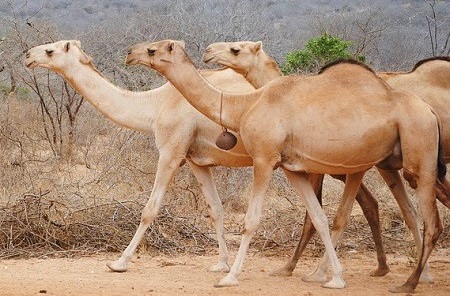



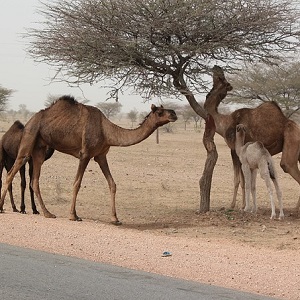
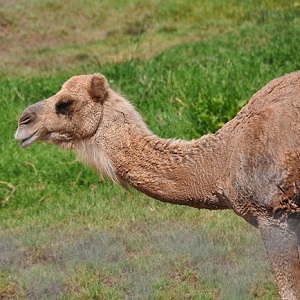
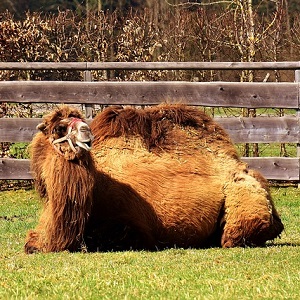
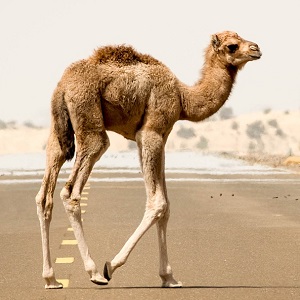
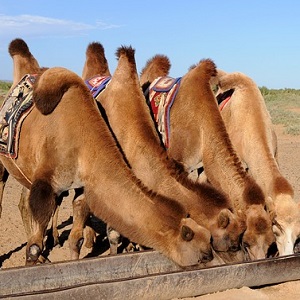

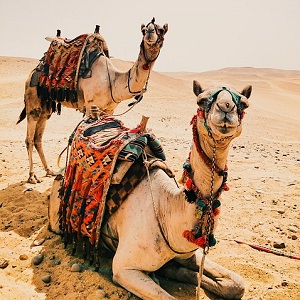
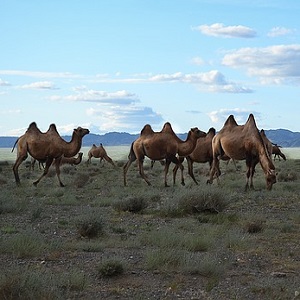
Breeds
